Abstract
A study has been made of the effects on hydroxyproline formation of 4 factors that influence the rate of cell elongation in the Avena coleoptile; auxin, sugars, an external osmoticum, and actinomycin D. Hydroxyproline formation is increased by a combination of auxin and sucrose, but is affected to a much lesser extent by either factor alone. Its formation is inhibited by an external osmoticum but is scarcely affected by actinomycin D. The lack of correlation between the amount of hydroxyproline synthesis and the growth rate suggests that hydroxyproline formation is not involved in the actual process of wall loosening. It is suggested, instead, that if the wall is to retain its capacity for rapid extension, those hemicelluloses which are incorporated into it by intussusception rather than by apposition must be attached to a hydroxyproline-protein.
Full text
PDF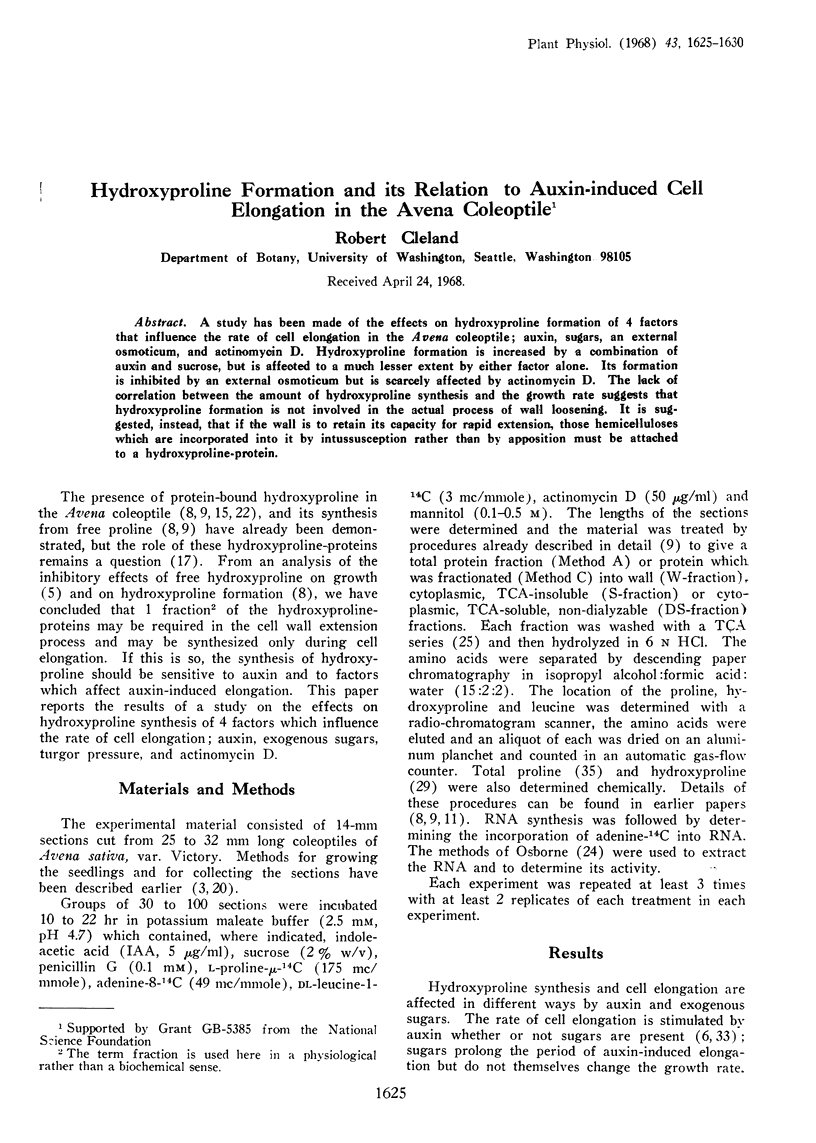
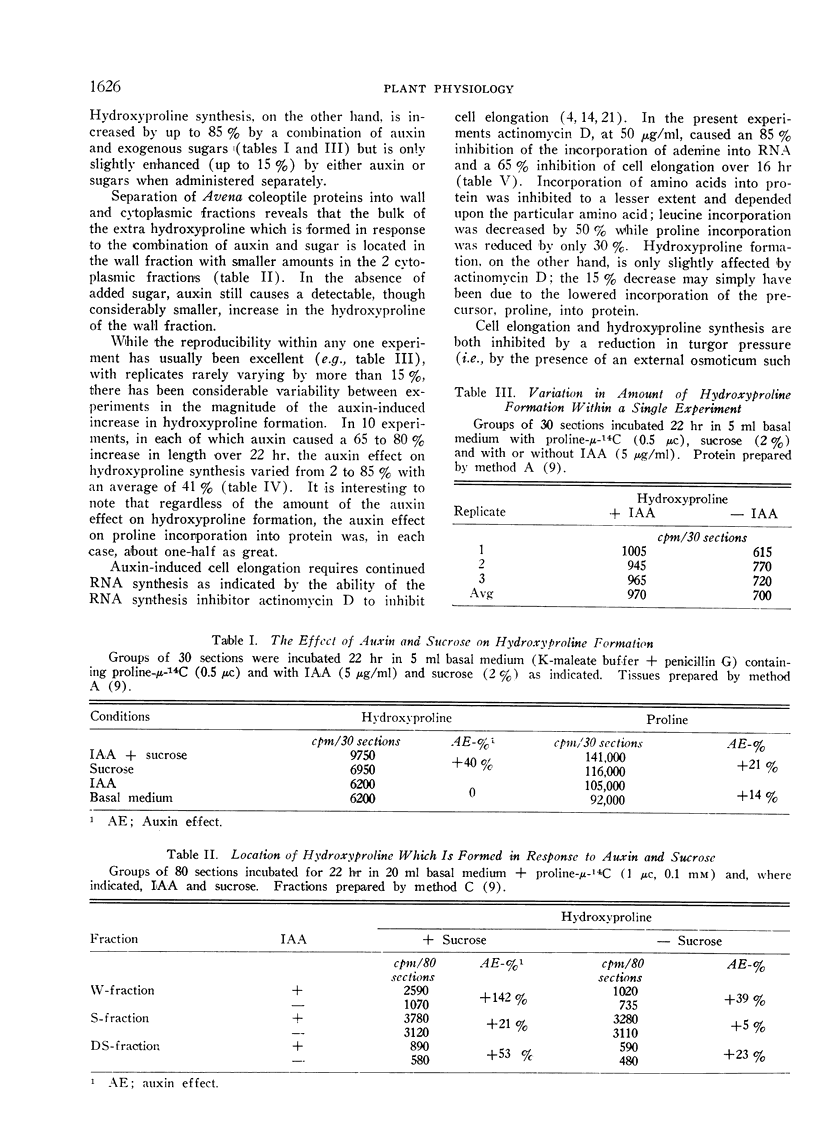

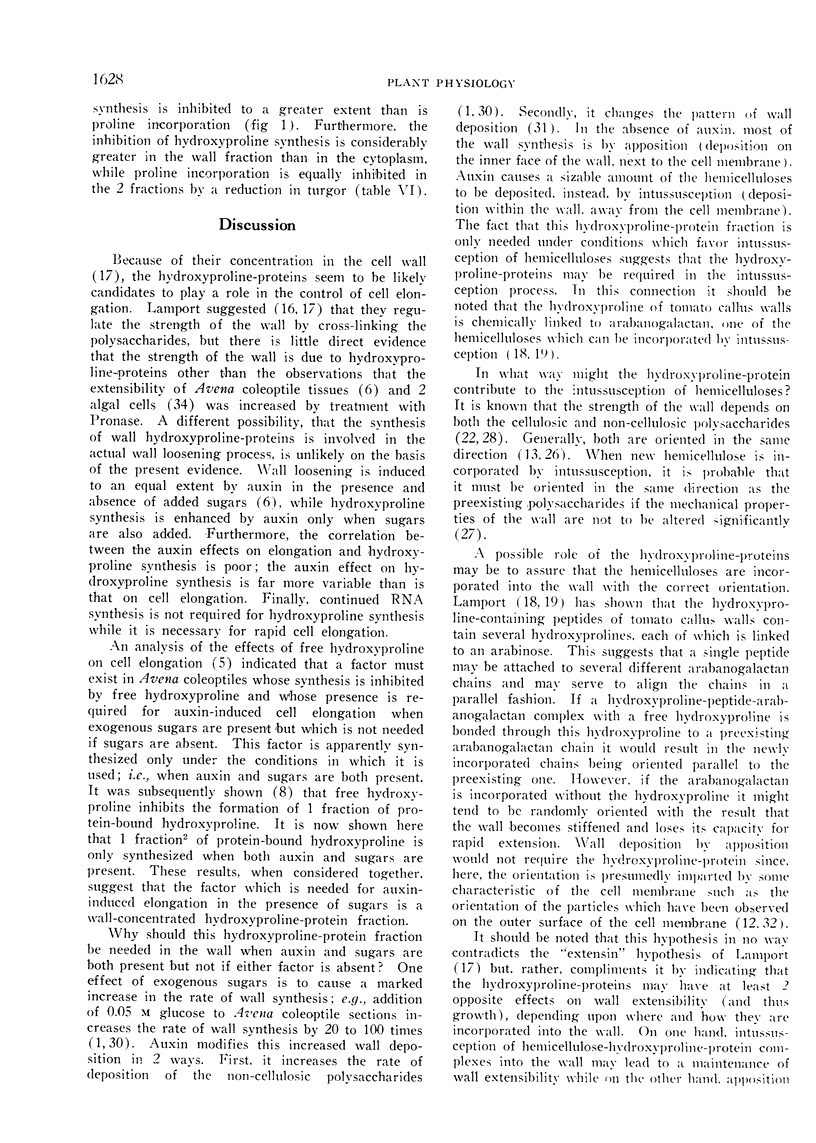
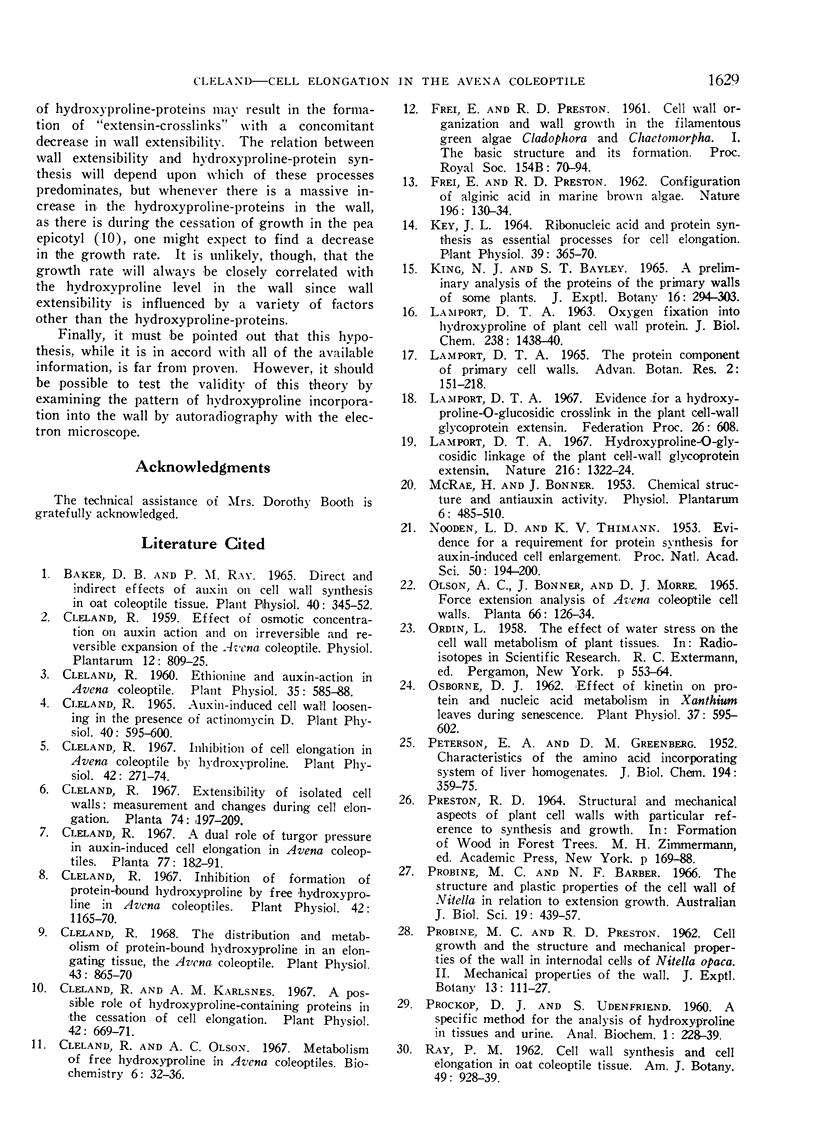
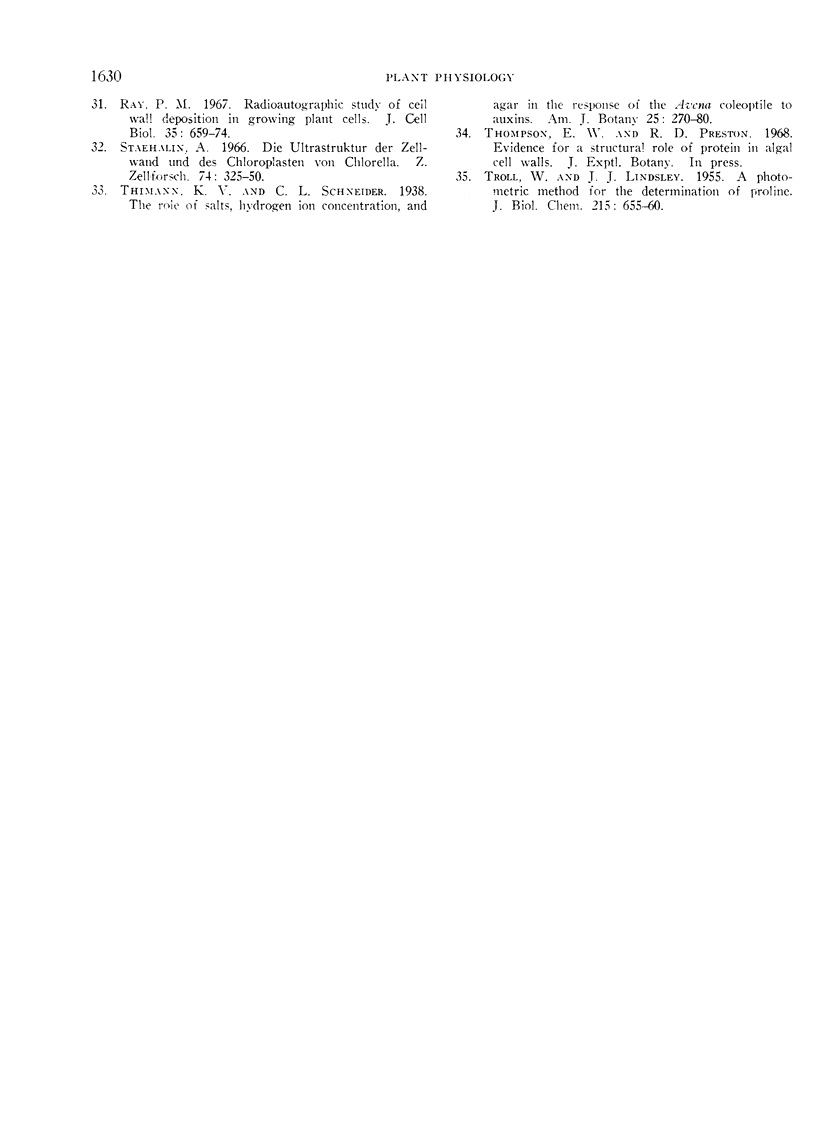
Selected References
These references are in PubMed. This may not be the complete list of references from this article.
- Baker D. B., Ray P. M. Direct and Indirect Effects of Auxin on Cell Wall Synthesis in Oat Coleoptile Tissue. Plant Physiol. 1965 Mar;40(2):345–352. doi: 10.1104/pp.40.2.345. [DOI] [PMC free article] [PubMed] [Google Scholar]
- Cleland R. Auxin-induced cell wall loosening in the presence of actinomycin D. Plant Physiol. 1965 Jul;40(4):595–600. doi: 10.1104/pp.40.4.595. [DOI] [PMC free article] [PubMed] [Google Scholar]
- Cleland R. Inhibition of cell elongation in Avena coleoptile by hydroxyproline. Plant Physiol. 1967 Feb;42(2):271–274. doi: 10.1104/pp.42.2.271. [DOI] [PMC free article] [PubMed] [Google Scholar]
- Cleland R. Inhibition of formation of protein-bound hydroxyproline by free hydroxyproline in Avena coleoptiles. Plant Physiol. 1967 Sep;42(9):1165–1170. doi: 10.1104/pp.42.9.1165. [DOI] [PMC free article] [PubMed] [Google Scholar]
- Cleland R., Karlsnes A. M. A possible role of hydroxyproline-containing proteins in the cessation of cell elongation. Plant Physiol. 1967 May;42(5):669–671. doi: 10.1104/pp.42.5.669. [DOI] [PMC free article] [PubMed] [Google Scholar]
- Cleland R., Olson A. C. Metabolism of free hydroxyproline in Avena coleoptiles. Biochemistry. 1967 Jan;6(1):32–36. doi: 10.1021/bi00853a007. [DOI] [PubMed] [Google Scholar]
- Key J. L. Ribonucleic Acid and Protein Synthesis as Essential Processes for Cell Elongation. Plant Physiol. 1964 May;39(3):365–370. doi: 10.1104/pp.39.3.365. [DOI] [PMC free article] [PubMed] [Google Scholar]
- LAMPORT D. T. Oxygen fixation into hydroxyproline of plant cell wall protein. J Biol Chem. 1963 Apr;238:1438–1440. [PubMed] [Google Scholar]
- Noodén L. D., Thimann K. V. EVIDENCE FOR A REQUIREMENT FOR PROTEIN SYNTHESIS FOR AUXIN-INDUCED CELL ENLARGEMENT. Proc Natl Acad Sci U S A. 1963 Aug;50(2):194–200. doi: 10.1073/pnas.50.2.194. [DOI] [PMC free article] [PubMed] [Google Scholar]
- Osborne D. J. Effect of Kinetin on Protein & Nucleic Acid Metabolism in Xanthium Leaves During Senescence. Plant Physiol. 1962 Sep;37(5):595–602. doi: 10.1104/pp.37.5.595. [DOI] [PMC free article] [PubMed] [Google Scholar]
- PETERSON E. A., GREENBERG D. M. Characteristics of the amino acid-incorporating system of liver homogenates. J Biol Chem. 1952 Jan;194(1):359–375. [PubMed] [Google Scholar]
- PROCKOP D. J., UDENFRIEND S. A specific method for the analysis of hydroxyproline in tissues and urine. Anal Biochem. 1960 Nov;1:228–239. doi: 10.1016/0003-2697(60)90050-6. [DOI] [PubMed] [Google Scholar]
- TROLL W., LINDSLEY J. A photometric method for the determination of proline. J Biol Chem. 1955 Aug;215(2):655–660. [PubMed] [Google Scholar]


